
The Nebraska Publications Clearinghouse receives documents every month from all Nebraska state agencies, including the University of Nebraska Press (UNP). Each month we will be showcasing the UNP books that the Clearinghouse receives. UNP books, as well as all Nebraska state documents, are available for checkout by libraries and librarians for their patrons.
Here are the UNP books the Clearinghouse received in November and December 2020:
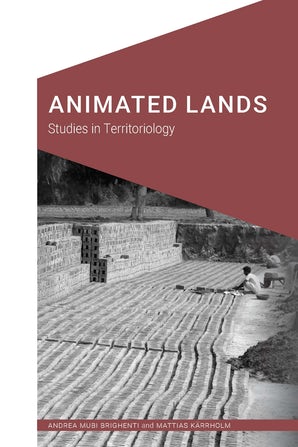
Animated Lands : Studies in Territoriology by Andrea Mubi Brighenti and Mattias Karrholm (Series: Cultural Geographies ; Rewriting the Earth)
In Animated Lands Andrea Mubi Brighenti and Mattias Kärrholm focus on territory as a living phenomenon—and territoriality as an active and constantly reshaping force. They explore the complexity of territorial production through a series of parallel investigations into fundamental territorial themes, such as rhythm, synchronization, melody, morphogenesis, and animism.
The notion of territory is excavated through case studies including the analysis of urban playgrounds, homemaking, the transformations of urban walls, and the stabilization of peculiar building types such as the house-museum. These empirical examples span such cities as Ahmedabad, Amsterdam, London, and Rome. Animated Lands provides a broad introduction to what a theory of territories could be and how it could help to advance sociospatial studies.
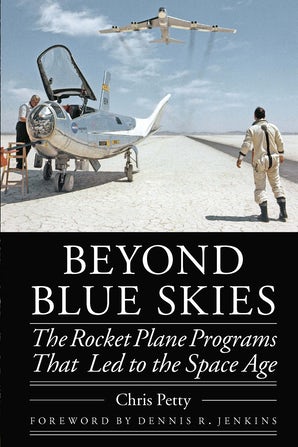
Beyond Blue Skies : The Rocket Plant Programs That Led to the Space Age by Chris Petty (Series: Outward Odyssey:A People’s History of Spaceflight)
In 1945 some experts still considered the so-called sound barrier an impenetrable wall, while winged rocket planes remained largely relegated to science fiction. But soon a series of unique rocket-powered research aircraft and the dedicated individuals who built, maintained, and flew them began to push the boundaries of flight in aviation’s quest to move ever higher, ever faster, toward the unknown. Beyond Blue Skies examines the thirty-year period after World War II during which aviation experienced an unprecedented era of progress that led the United States to the boundaries of outer space.
Between 1946 and 1975, an ancient dry lakebed in California’s High Desert played host to a series of rocket-powered research aircraft built to investigate the outer reaches of flight. The western Mojave’s Rogers Dry Lake became home to Edwards Air Force Base, NASA’s Flight Research Center, and an elite cadre of test pilots. Although one of them—Chuck Yeager—would rank among the most famous names in history, most who flew there during those years played their parts away from public view. The risks they routinely accepted were every bit as real as those facing NASA’s astronauts, but no magazine stories or free Corvettes awaited them—just long days in a close-knit community in the High Desert.
The role of not only the test pilots but the engineers, aerodynamicists, and support staff in making supersonic flight possible has been widely overlooked. Beyond Blue Skies charts the triumphs and tragedies of the rocket-plane era and the unsung efforts of the men and women who made amazing achievements possible.
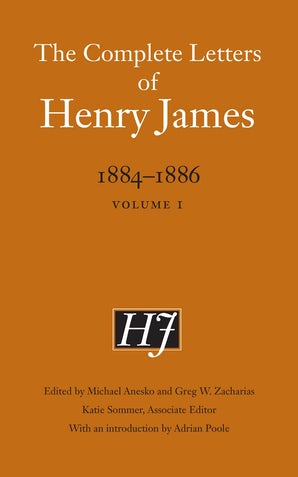
The Complete Letters of Henry James, 1884-1886, Volume I Edited by Michael Anesko and Greg W. Zacharias (Series: The Complete Letters of Henry James)Recipient of the Approved Edition seal from the Modern Language Association’s Committee on Scholarly Editions
This volume of The Complete Letters of Henry James, 1884–1886 includes 179 letters, 94 published for the first time, written between November 11, 1884, and December 21, 1885. The letters mark Henry James’s ongoing efforts to care for his sister, develop his work, strengthen his professional status, build friendships old and new, and maximize his income. James details work on midcareer novels The Bostonians and The Princess Casamassima as well as on tales that would help to define his career. He reveals his close acquaintance with British politics and politicians. This volume opens with Alice James’s arrival in England and concludes with Henry James’s plans to leave his flat in Piccadilly for his new address in De Vere Gardens, Kensington.
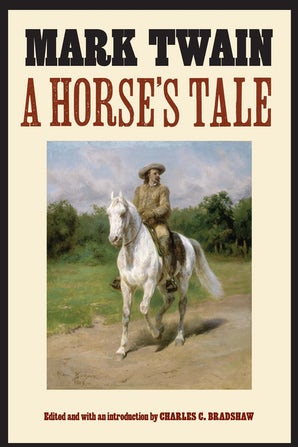
A Horse’s Tale by Mark Twain ; Edited and with an introduction by Charles C. Bradshaw. (Series: The Papers of William F. “Buffalo Bill” Cody)
At the turn of the twentieth century Minnie Maddern Fiske, a New York actress, socialite, and animal rights activist, wrote to Mark Twain with an unusual request: for Twain to write about the evils of bullfighting equal to that of his anti-vivisectionist story A Dog’s Tale. Twain responded with A Horse’s Tale, a comic animal tale that doubled as a frontier adventure and political diatribe.
A Horse’s Tale concerns Soldier Boy, Buffalo Bill Cody’s favorite horse, as the protagonist and sometime narrator at a fictional frontier outpost with the U.S. Seventh Cavalry. When the general’s orphaned niece arrives, Buffalo Bill takes her under his wing and ultimately lends her Soldier Boy so that they may seek adventure together. Twain uses the friendship between the girl and the horse as the basis for his eventual indictment of the barbarism of Spanish bullfighting. Twain’s novella is unusual for its complex tone—combining a comic children’s story and a dark portrait of animal cruelty. Including the themes of transatlantic relations and frontier culture, Twain offers a fresh look into the world of Buffalo Bill Cody from the perspective of one of America’s most beloved authors.
First published in 1906 in Harper’s Monthly and as a single volume the following year, A Horse’s Tale never again appeared in print except in anthologies of Twain’s work. This edition includes the full text of Twain’s original story, an introduction that situates the work in historical and biographical context, thorough annotations, and the addition of significant archival material related to Twain, Cody, and Fiske.
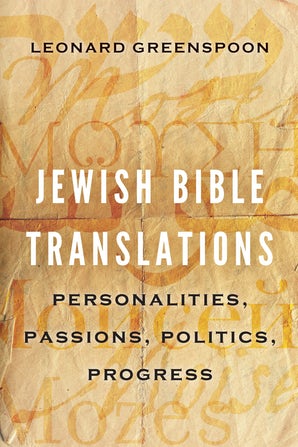
Jewish Bible Translations : Personalities, Passions, Politics, Progress by Leonard Greenspoon
Jewish Bible Translations is the first book to examine Jewish Bible translations from the third century BCE to our day. It is an overdue corrective of an important story that has been regularly omitted or downgraded in other histories of Bible translation.
Examining a wide range of translations over twenty-four centuries, Leonard Greenspoon delves into the historical, cultural, linguistic, and religious contexts of versions in eleven languages: Arabic, Aramaic, English, French, German, Greek, Hungarian, Italian, Russian, Spanish, and Yiddish. He profiles many Jewish translators, among them Buber, Hirsch, Kaplan, Leeser, Luzzatto, Mendelssohn, Orlinsky, and Saadiah Gaon, framing their aspirations within the Jewish and larger milieus in which they worked.
Greenspoon differentiates their principles, styles, and techniques—for example, their choice to emphasize either literal reflections of the Hebrew or distinctive elements of the vernacular language—and their underlying rationales. As he highlights distinctive features of Jewish Bible translations, he offers new insights regarding their shared characteristics and their limits. Additionally, Greenspoon shows how profoundly Jewish translators and interpreters influenced the style and diction of the King James Bible.
Accessible and authoritative for all from beginners to scholars, Jewish Bible Translations enables readers to make their own informed evaluations of individual translations and to holistically assess Bible translation within Judaism.
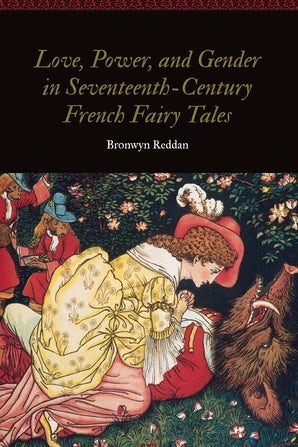
Love, Power, and Gender in Seventeenth-Century French Fairy Tales by Bronwyn Reddan (Series: Women and Gender in the Early Modern World)
Love is a key ingredient in the stereotypical fairy-tale ending in which everyone lives happily ever after. This romantic formula continues to influence contemporary ideas about love and marriage, but it ignores the history of love as an emotion that shapes and is shaped by hierarchies of power including gender, class, education, and social status. This interdisciplinary study questions the idealization of love as the ultimate happy ending by showing how the conteuses, the women writers who dominated the first French fairy-tale vogue in the 1690s, used the fairy-tale genre to critique the power dynamics of courtship and marriage. Their tales do not sit comfortably in the fairy-tale canon as they explore the good, the bad, and the ugly effects of love and marriage on the lives of their heroines.
Bronwyn Reddan argues that the conteuses’ scripts for love emphasize the importance of gender in determining the “right” way to love in seventeenth-century France. Their version of fairy-tale love is historical and contingent rather than universal and timeless. This conversation about love compels revision of the happily-ever-after narrative and offers incisive commentary on the gendered scripts for the performance of love in courtship and marriage in seventeenth-century France.
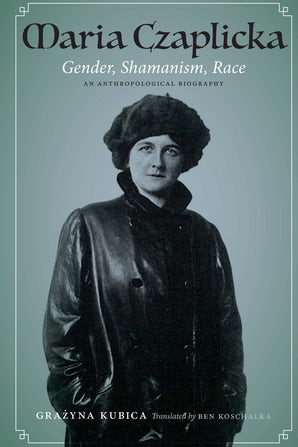
Maria Czaplicka : Gender, Shamanism, Race by Grazyna Kubica ; Translated by Ben Koschalka (Series: Critical Studies in the History of Anthropology)
This biography of the Polish British anthropologist Maria Czaplicka (1884–1921) is also a cultural study of the dynamics of the anthropological collective presented from a researcher-centric perspective. Czaplicka, together with Bronisław Malinowski, studied anthropology in London and later at Oxford, then she headed the Yenisei Expedition to Siberia (1914–15) and was the first female lecturer of anthropology at Oxford. She was an engaged feminist and an expert on political issues in Northern Asia and Eastern Europe. But this remarkable woman’s career was cut short by suicide. Like many women anthropologists of the time, Czaplicka journeyed through various academic institutions, and her legacy has been dispersed and her field materials lost.
Grażyna Kubica covers the major events in Czaplicka’s life and provides contextual knowledge about the intellectual formation in which Czaplicka grew up, including the Warsaw radical intelligentsia and the contemporary anthropology of which she became a part. Kubica also presents a critical analysis of Czaplicka’s scientific and literary works, related to the issues of gender, shamanism, and race. Kubica shows how Czaplicka’s sense of agency and subjectivity enriched and shaped the practice of anthropology and sheds light on how scientific knowledge arises and is produced.
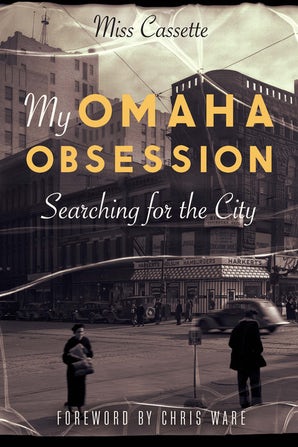
My Omaha Obsession : Searching for the City by Miss Cassette
My Omaha Obsession takes the reader on an idiosyncratic tour through some of Omaha’s neighborhoods, buildings, architecture, and people, celebrating the city’s unusual history. Rather than covering the city’s best-known sites, Miss Cassette is irresistibly drawn to strange little buildings and glorious large homes that don’t exist anymore as well as to stories of Harkert’s Holsum Hamburgers and the Twenties Club.
Piecing together the records of buildings and homes and everything interesting that came after, Miss Cassette shares her observations of the property and its significance to Omaha. She scrutinizes land deeds, insurance maps, tax records, and old newspaper articles to uncover a property’s singular story. Through conversations with fellow detectives and history enthusiasts, she guides readers along her path of hunches, personal interests, mishaps, and more.
As a longtime resident of Omaha, Miss Cassette is informed by memories of her youth combined with an enduring curiosity about the city’s offbeat relics and remains. Part memoir and part research guide with a healthy dose of colorful wandering, My Omaha Obsession celebrates the historic built environment and searches for the people who shaped early Omaha.
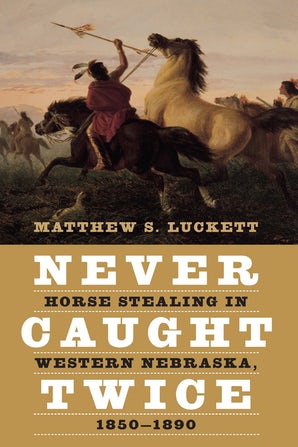
Never Caught Twice : Horse Stealing in Western Nebraska, 1850-1890 by Matthew S. Luckett
Never Caught Twice presents the untold history of horse raiding and stealing on the Great Plains of western Nebraska. By investigating horse stealing by and from four Plains groups—American Indians, the U.S. Army, ranchers and cowboys, and farmers—Matthew S. Luckett clarifies a widely misunderstood crime in Western mythology and shows that horse stealing transformed plains culture and settlement in fundamental and surprising ways.
From Lakota and Cheyenne horse raids to rustling gangs in the Sandhills, horse theft was widespread and devastating across the region. The horse’s critical importance in both Native and white societies meant that horse stealing destabilized communities and jeopardized the peace throughout the plains, instigating massacres and murders and causing people to act furiously in defense of their most expensive, most important, and most beloved property. But as it became increasingly clear that no one legal or military institution could fully control it, would-be victims desperately sought a solution that would spare their farms and families from the calamitous loss of a horse. For some, that solution was violence. Never Caught Twice shows how the story of horse stealing across western Nebraska and the Great Plains was in many ways the story of the old West itself.
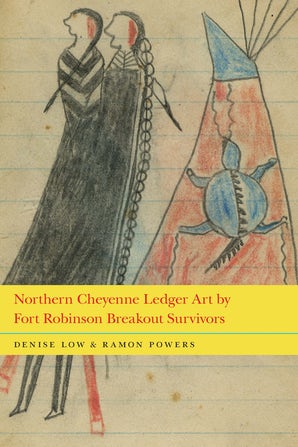
Northern Cheyenne Ledger Art by Fort Robinson Breakout Survivors by Denise Low and Ramon Powers
Northern Cheyenne Ledger Art by Fort Robinson Breakout Survivors presents the images of Native warriors—Wild Hog, Porcupine, and Left Hand, as well as possibly Noisy Walker (or Old Man), Old Crow, Blacksmith, and Tangled Hair—as they awaited probable execution in the Dodge City jail in 1879. When Sheriff Bat Masterson provided drawing materials, the men created war books that were coded to avoid confrontation with white authorities and to narrate survival from a Northern Cheyenne point of view. The prisoners used the ledger-art notebooks to maintain their cultural practices during incarceration and as gifts and for barter with whites in the prison where they struggled to survive.
The ledger-art notebooks present evidence of spiritual practice and include images of contemporaneous animals of the region, hunting, courtship, dance, social groupings, and a few war-related scenes. Denise Low and Ramon Powers include biographical materials from the imprisonment and subsequent release, which extend the historical arc of Northern Cheyenne heroes of the Plains Indian Wars into reservation times. Sources include selected ledger drawings, army reports, letters, newspapers, and interviews with some of the Northern Cheyenne men and their descendants. Accounts from a firsthand witness of the drawings and composition of the ledgers themselves give further information about Native perspectives on the conflicted history of the North American West in the nineteenth century and beyond.
This group of artists jailed after the tragedy of the Fort Robinson Breakout have left a legacy of courage and powerful art.
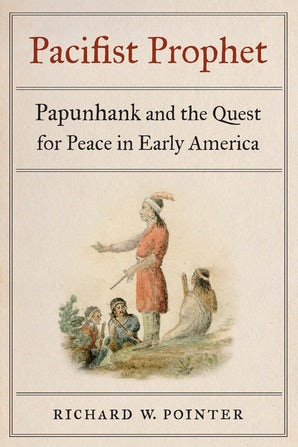
Pacifist Prophet : Paunhank and the Quest for Peace in Early America by Richard W. Pointer
Pacifist Prophet recounts the untold history of peaceable Native Americans in the eighteenth century, as explored through the world of Papunhank (ca. 1705–75), a Munsee and Moravian prophet, preacher, reformer, and diplomat. Papunhank’s life was dominated by a search for a peaceful homeland in Pennsylvania and the Ohio country amid the upheavals of the era between the Seven Years’ War and the American Revolution.
His efforts paralleled other Indian quests for autonomy but with a crucial twist: he was a pacifist committed to using only nonviolent means. Such an approach countered the messages of other Native prophets and ran against the tide in an early American world increasingly wrecked with violence, racial hatred, and political turmoil. Nevertheless, Papunhank was not alone. He followed and contributed to a longer and wider indigenous peace tradition.
Richard W. Pointer shows how Papunhank pushed beyond the pragmatic pacifism of other Indians and developed from indigenous and Christian influences a principled pacifism that became the driving force of his life and leadership. Hundreds of Native people embraced his call to be “a great Lover of Peace” in their quests for home. Against formidable odds, Papunhank’s prophetic message spoke boldly to Euro-American and Native centers of power and kept many Indians alive during a time when their very survival was constantly threatened. Papunhank’s story sheds critical new light on the responses of some Munsees, Delawares, Mahicans, Nanticokes, and Conoys for whom the “way of war” was no way at all.
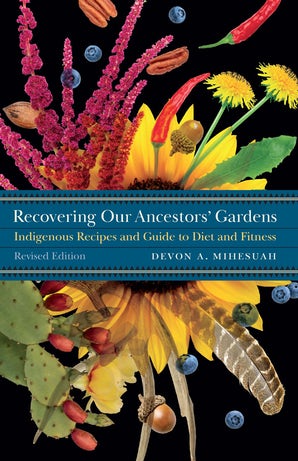
Recovering Our Ancestors’ Gardens : Indigenous Recipes and Guide to Diet and Fitness by Devon A. Mihesuah
2020 Gourmand World Cookbook Award
Winner of the Gourmand International World Cookbook Award,Recovering Our Ancestors’ Gardens is back! Featuring an expanded array of tempting recipes of indigenous ingredients and practical advice about health, fitness, and becoming involved in the burgeoning indigenous food sovereignty movement, the acclaimed Choctaw author and scholar Devon A. Mihesuah draws on the rich indigenous heritages of this continent to offer a helpful guide to a healthier life.
Recovering Our Ancestors’ Gardens features pointed discussions about the causes of the generally poor state of indigenous health today. Diminished health, Mihesuah contends, is a pervasive consequence of colonialism, but by advocating for political, social, economic, and environmental changes, traditional food systems and activities can be reclaimed and made relevant for a healthier lifestyle today.
New recipes feature pawpaw sorbet, dandelion salad, lima bean hummus, cranberry pie with cornmeal crust, grape dumplings, green chile and turkey posole, and blue corn pancakes, among other dishes. Savory, natural, and steeped in the Native traditions of this land, these recipes are sure to delight and satisfy.
This new edition is revised, updated, and contains new information, new chapters, and an extensive curriculum guide that includes objectives, resources, study questions, assignments, and activities for teachers, librarians, food sovereignty activists, and anyone wanting to know more about indigenous foodways.
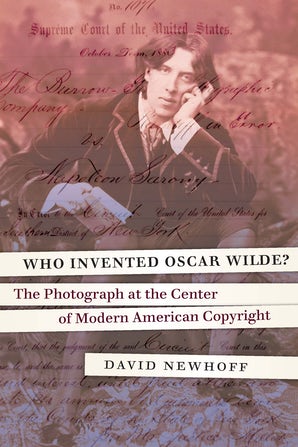
Who Invented Oscar Wilde? : The Photograph at the Center of Modern American Copyright by David Newhoff
In early 1882, before young Oscar Wilde embarked on his lecture tour across America, he posed for publicity photos taken by a famously eccentric New York photographer named Napoleon Sarony. Few would guess that one of those photographs would become the subject of the Supreme Court case that challenged copyright protection for all photography—a constitutional question that asked how a machine-made image could possibly be a work of human creativity.
Who Invented Oscar Wilde? is a story about the nature of authorship and the “convenient fiction” we call copyright. While a seemingly obscure topic, copyright has been a hotly contested issue almost since the day the internet became publicly accessible. The presumed obsolescence of authorial rights in this age of abundant access has fueled a debate that reaches far beyond the question of compensation for authors of works. Much of the literature on the subject is either highly academic, highly critical of copyright, or both.
With a light and balanced touch, David Newhoff makes a case for intellectual property law, tracing the concept of authorship from copyright’s ancient beginnings to its adoption in American culture to its eventual confrontation with photography and its relevance in the digital age. Newhoff tells a little-known story that will appeal to a broad spectrum of interests while making an argument that copyright is an essential ingredient to upholding the principles on which liberal democracy is founded.
**All book covers and synopses courtesy of University of Nebraska Press (https://www.nebraskapress.unl.edu/)

